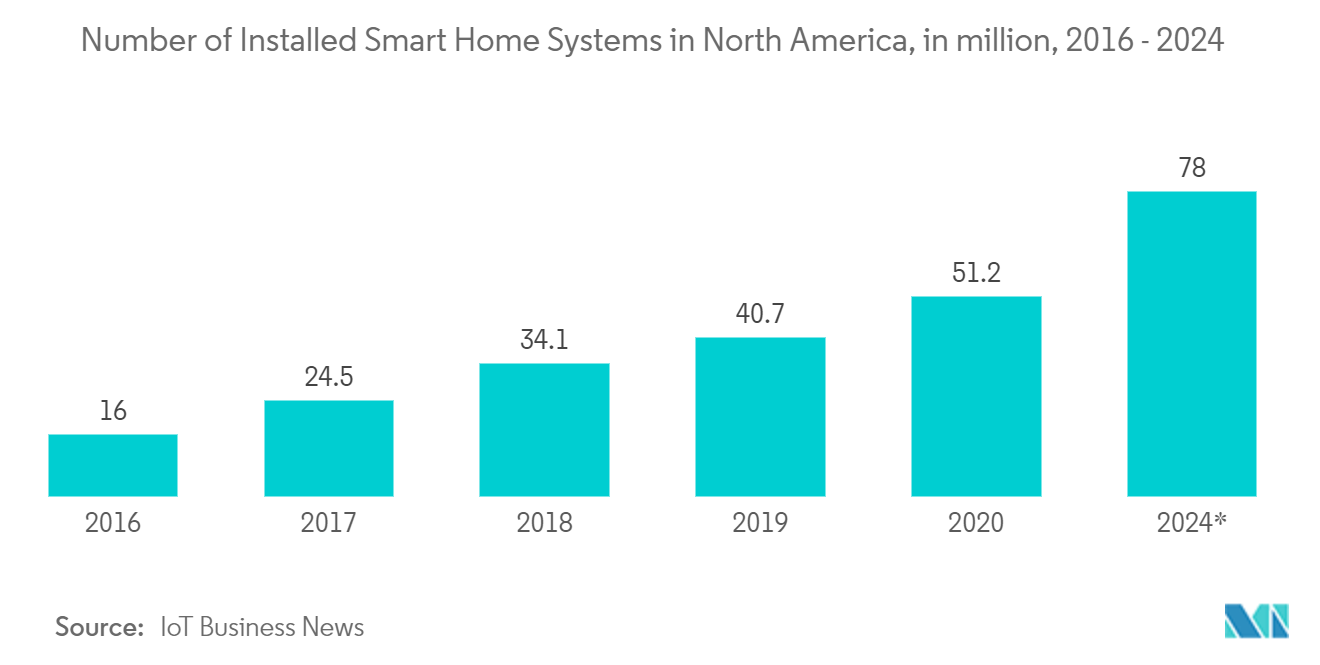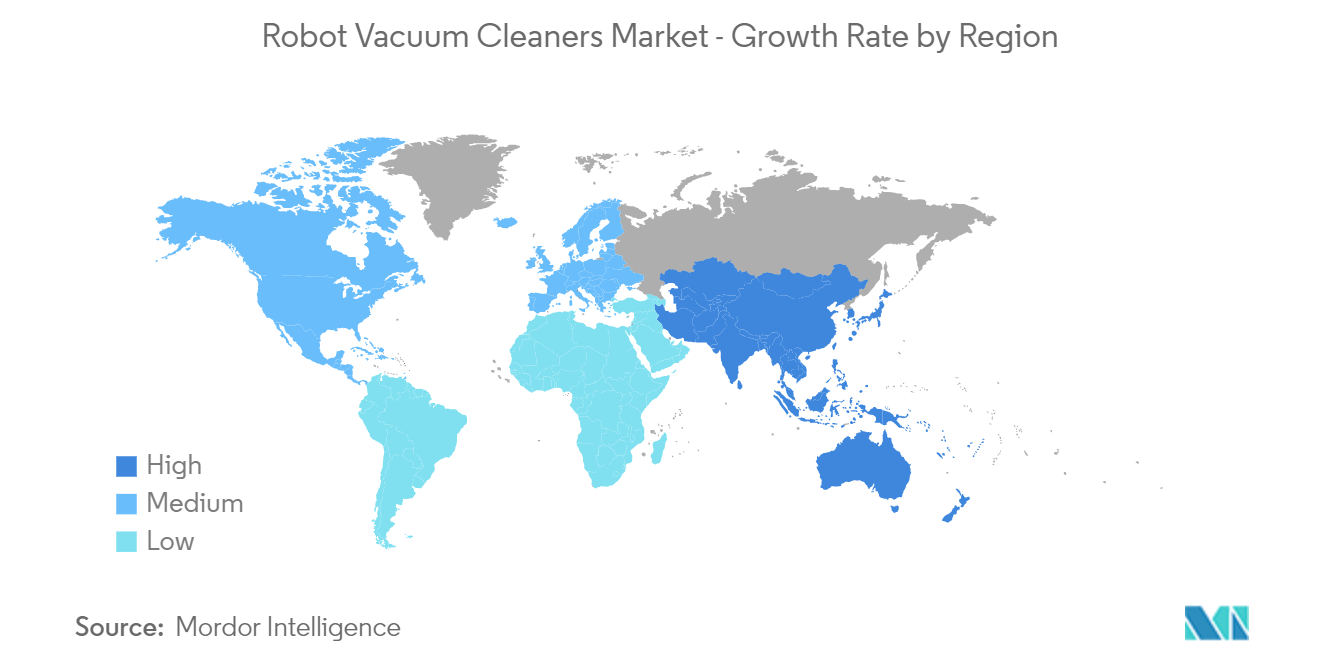Market Trends of Robot Vacuum Cleaners Industry
This section covers the major market trends shaping the Robot Vacuum Cleaners Market according to our research experts:
Residential Households to Witness Fastest Growth
- The increase in disposable income, dual-income households, and lifestyle changes are key drivers in this market, enabling consumers in emerging nations to purchase AI-based smart devices such as robotic cleaning products. Due to its growth in Europe, North America, and Asia-Pacific, the need for smart homes is increasing on a global scale.
- In developed countries, market vendors are also increasingly targeting commercial cleaning applications. They offer a product that enables carpets to collect dirt, dust, dander, and bacteria, especially in public places, like an airport or hotel lobby.
- Over the forecasted period, demand for robotic vacuum cleaners is anticipated to increase due to the development of robotic vacuum cleaners and the adoption of cutting-edge technology like Wi-Fi connectivity, artificial intelligence (AI) capabilities, and voice assistance (VA) in smart homes and commercial activities. To keep up with the continuously shifting demands of their customers, many companies concentrate on developing and providing cutting-edge new products.
- Due to the time and effort they save, consumers across all market sectors are placing a premium on automated products. As consumers use automated cleaners more frequently, which encourages the use of smart home technology, market growth is projected. However, conventional construction methods and intelligent homes are now within reach and gaining popularity due to advancements in electronics and their smooth integration with earlier technologies.
- The latest robotic vacuum models can also converse with Google Assistant or Amazon's Alexa to comprehend and execute audible commands. The interoperability of smart home and Internet of Things (IoT) devices may create new markets and commercial opportunities for manufacturers of robotic vacuum cleaners.

North America to Occupy the Largest Market Share
- North America, among the leading innovators and pioneers in the adoption of robotics, is one of the largest markets. The primary reason for the market's growth is the increasing adoption of domestic robots across the region.
- One of the key nations that have contributed considerably to expand the worldwide market for robot vacuum cleaners in recent years is the United States. The nation is a significant investor and inventor in the area under study. The United States is home to several of the largest and most well-known businesses in the sector under investigation. Vendors in the US market are known for their cutting-edge products. However, most of these businesses outsourced their manufacturing tasks and concentrated their engineering efforts on robot design.
- The United States, followed by Canada, records the highest growth rate, owing to the significant adoption of robot vacuum cleaners throughout the region. The primary factor boosting the market growth in the region is the gradual rise in the disposable income of the consumers in the region and the rapid change in people's lifestyles.
- With the effective implementation of 5G in the United States and better Wi-Fi technology, such as Wi-Fi 6, the market for robotic vacuum cleaners is significantly rising and is likely to continue growing in the forecast period due to the increasing acceptance of smart home technology and products in the North America region followed by the United States.
- Moreover, among all the household robots, automated vacuum cleaners and moppers are the most commercialized and developed products. Regional companies are continuously investing in developing more compact and integrated vacuum cleaners and mopping robots to reach small places at home.
- The vendors in the region under study rely heavily on several single-source contract manufacturers, primarily based in Asia-Pacific. However, most of these businesses are moving their manufacturing facilities, which has become an expensive and time-consuming due to the current US-China trade war and other geopolitical difficulties.


